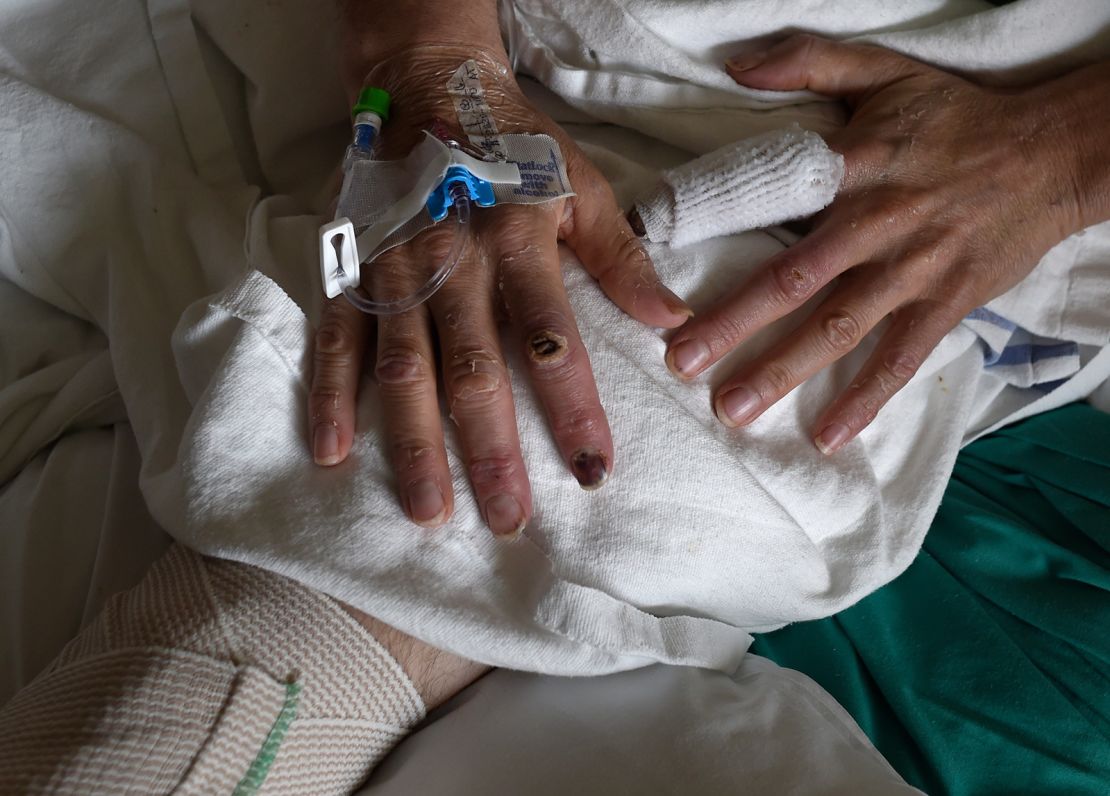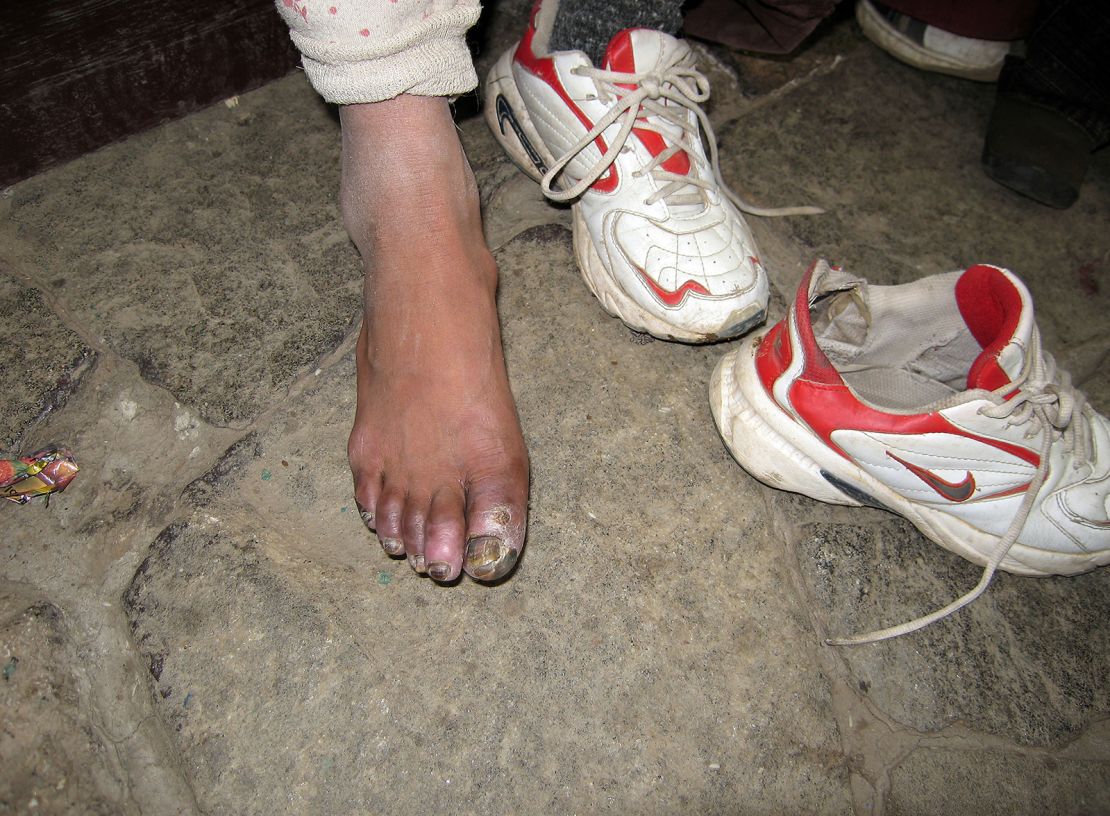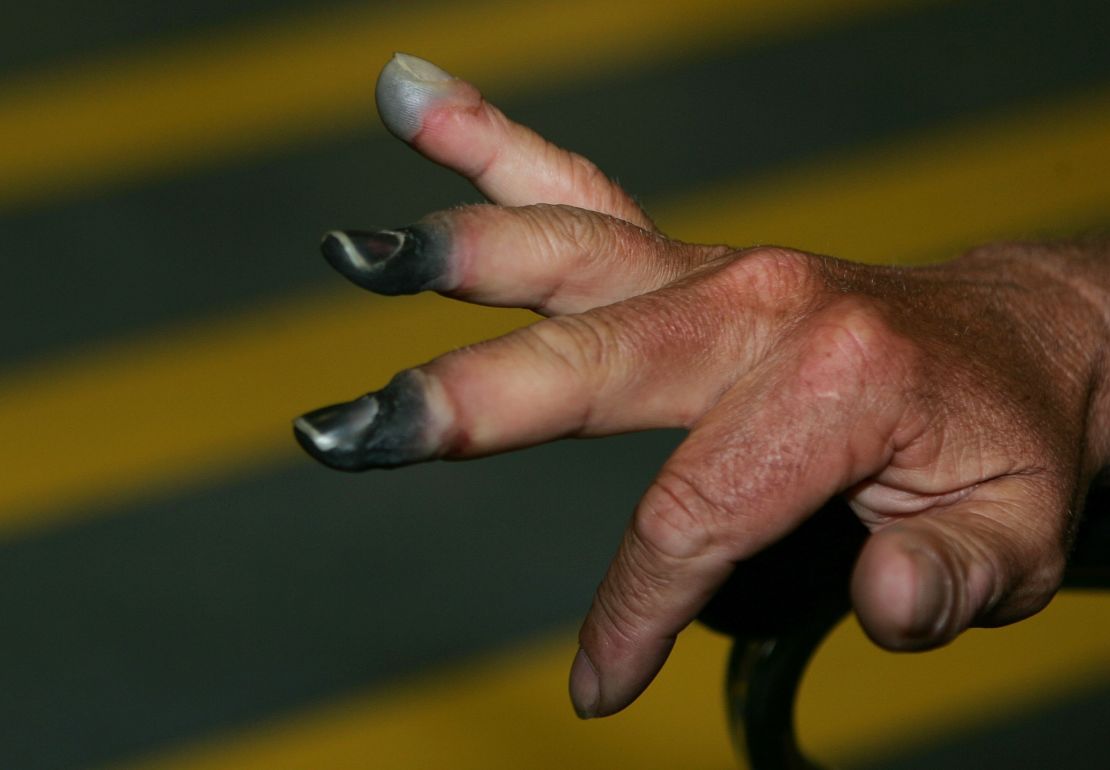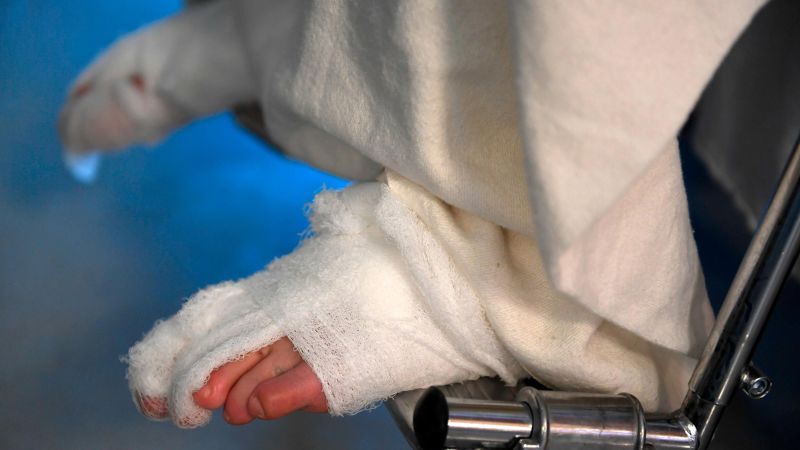cnn
—
It's cold. We are talking about dangerous cold. Cold that could rip off the tips of your nose, ears, chin, fingers or toes if you're not careful. Called frostbite, it occurs when the skin and the tissue under the skin freeze, which can happen much faster than you imagine.
Freezing does not only depend on the outside temperature. It is also affected by the wind chill factor. As wind speed increases, our bodies cool at a faster rate, causing skin temperature to drop. Higher altitudes can also increase the rate at which skin can freeze.
The National Weather Service has created a wind chill graph that shows how long it could take for frostbite to develop at different temperatures and wind speeds. The index was tested on human face models.
For example, if it were zero degrees Fahrenheit (minus 17.8 degrees Celsius) and calm, the chances of suffering frostbite would be relatively low. Add wind at 15 miles per hour, and it would be 30 minutes before freezing would occur. If the wind increased to more than 50 miles per hour, it would take just 10 minutes for the frost to appear.
Your skin would freeze in just five minutes if you were outside at -25 degrees Fahrenheit (-31.7 degrees Celsius) with a wind speed of just over 25 miles per hour.
You are more susceptible to frostbite if you smoke, take medications called beta blockers, have poor blood flow to your legs, or have diabetes or Raynaud's syndrome, a condition in which strong emotions or cold temperatures cause blood vessels to spasm and They block blood flow. to the extremities.
Seniors and people who live outdoors without adequate clothing, heat, and food are also at high risk, as are hikers and hunters who are not properly dressed and stay outdoors too long.
The U.S. Centers for Disease Control and Prevention also warns that anyone who drinks alcohol excessively or uses illicit drugs is at high risk. (see CDC charts below for more information.) While you may feel like your body is warmer, your core temperature and blood pressure actually drop.
And of course, you're more likely to freeze if you're not dressed appropriately for the weather. The CDC has a visual chart showing critical areas to keep covered in extreme cold.
First degree frostbite: The first stage of frostbite is often called “frostnip” and begins with redness and a tingling sensation. Get out of the cold quickly at this time to avoid further skin damage.

A soft bite on your body it could be warmed by the heat of its own body; Try sticking those fingers into your armpit, for example. Rewarm those red fingers by soaking them in warm, never hot, water for up to 30 minutes. Since you won't be able to tell with those stubby toes, test the water with another part of your body to make sure it's comfortable. Rewarm ears, nose and cheeks with warm cloths; Resoak and reapply repeatedly.
Be prepared to feel some pain when the frozen areas come back to life. You will know when the warm-up is complete when the skin is soft and all sensation has returned. But don't use stoves or heating pads, the CDC warns. Those numb bits can't determine temperature and could easily burn as they heat up.

Second degree frostbite: Surface freezing is the second stage. It is known as second-degree frostbite and begins when the skin begins to turn pale white or grayish-yellow instead of red. It might even start to look blue. Ice crystals are starting to form on the skin, which may become hard and numb to the touch. Some people say it feels “waxy.”
Unfortunately, because the pain and redness decreases, people often don't realize what is happening to them. But soon, the skin may heat up and begin to swell, which is a sign that tissue damage is occurring. This is the time when immediate medical treatment is needed to prevent further and more serious damage.
Immediate rewarming is key, but must be done carefully by trained medical professionals, who will immediately wrap the injured area to protect it. Sometimes fluid-filled blisters may develop and the skin may sting, sting, and swell dramatically.

Third degree frostbite: The next stage is deep frostbite, in which the skin may appear blue and mottled, and numb to pain and cold. Blisters filled with blood may form. The muscles near the area may not work properly. At this point, you are at risk of blood clots and will need blood-thinning medications to increase blood flow to the area.
Medical care is crucial at this stage to avoid amputation of the injured tissue. Depending on the severity of the injury, the tissue may look black and feel hard after being rewarmed. If the tissue has died, a process called gangrene occurs. The dead areas may then need to be removed or amputated. Sometimes there can also be lasting damage to the muscles, tendons, nerves and bones in the area.
If medical care is not immediately available, wrap the affected areas with sterile bandages, carefully separating the injured fingers and toes from each other. But try to move the affected areas as little as possible to avoid further tissue damage.
If a frozen area is warmed and then refrozen, the damage can be even more severe. According to the U.S. National Library of Medicine, if refreezing is a possibility, it would be best to delay the initial warming process until a warm location can be found. Hot drinks are best for replenishing lost body fluids.
Two more warnings from the CDC: Don't rub snow or massage frozen areas. You will simply worsen the tissue damage. The same applies to walking with frozen feet or toes, so avoid it unless absolutely necessary.












